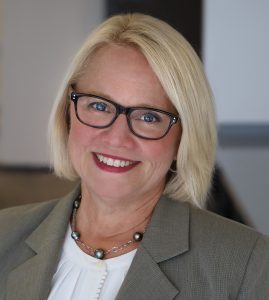 Successful brokers are preparing for open enrollment bygetting ahead of clients' needs, brainstorming solutions wellbefore they're feeling any pain, and thinking about how to exceedtheir expectations. (Photo: Shutterstock)
Successful brokers are preparing for open enrollment bygetting ahead of clients' needs, brainstorming solutions wellbefore they're feeling any pain, and thinking about how to exceedtheir expectations. (Photo: Shutterstock)
The upcoming open enrollment season promises to be one unlikeany other. A dramatic shift to a remoteworkforce, major changes in the way workplaces are run, and thestate of the economy (to name a few factors), are all impacting howemployees think about and use their benefits. Whileshifting to virtual enrollment may bring with it somechallenges and sticking points, overall it will present a uniqueopportunity for benefits professionals to redefine the enrollmentprocess and engage employees in a meaningful way.
|Related: 2020 open enrollment: Unchartedterritory
|BenefitsPRO reached out to Sally Prather, employee benefitspractice leader with Alera Group to get her insights into what toexpect and how brokers are preparing for this year's enrollmentseason.
| SallyPrather is the employee benefits practice leader for AleraGroup.
SallyPrather is the employee benefits practice leader for AleraGroup.
What new digital strategies and tools are you using?
With more employees working remotely—and with so muchuncertainty around COVID-19—clients recognize that we need to dothings differently, and that technology will need to play a greaterrole.
|While this may be a harder transition for a few of our smallerclients—particularly for mom-and-pop-like cultures, who are stillholding paper enrollments—most are fully on board. For them, usingdigital tools around enrollment won't be new. On the contrary,they've been using them for a few years now, as part of thedecision-support and enrollment processes. The only difference thisyear is that they'll need to rely on them more heavily than before,given that organizations can't hold gatherings or use the officeenvironment to distribute information (e.g., posters, desk-dropbrochures, flyers in the break rooms, etc.), since so manyemployees are working remotely.
|With that in mind, we developed our "Open Enrollment Cookbook"to support clients in making this pivot for 2021. It's asemi-custom, turnkey campaign that features the best practices inboth enrollment and virtual benefits communications. The campaignitself includes the usual suspects, like a guide, newsletter,postcard, video, and presentation—materials we know work well inmeeting all employees somewhere. And virtual includes any deliverymethod that doesn't require an in-person exchange. Thinkmail-to-home and online tactics, like Flimp and Brainshark forpresentations, Flipping Book for guides, Zoom and GoToWebinar forvirtual town halls, and Jellyvision.
|We're also training our teams on how to lead virtual meetings sothey have the desired impact, because we know that using digitaltechnologies successfully is about more than just functionality.It's also about how well presenters connect with audiences. Onlineaudiences are different than in-person audiences in that they'remore easily distracted, and prone to multi-tasking. That's why weneed to pay special attention to how we'll engage them, because thestakes are high. The information we give to employees has importantimplications for their lives. We want to make sure to get itright.
|How will you make sure different groups don't fall through thecracks–deskless workers, those with limited tech access,furloughed/sick leave workers?
By doing a thorough assessment of their audiences during thestrategic planning process, which we're starting earlier this yearas a result of COVID-19. We typically work with our clients tounderstand their goals and objectives, messaging, and the needs oftheir various populations ahead of developing communications. Forthose employees that are harder to reach, we look for how clientsspeak to them outside of the Open Enrollment period. Usually,people in the company's marketing or human resource departmentshave already figured that out. If that's the case, we use thesystems they've already got in place.
|If, however, our clients don't have a system already in place,or if a subset of their population is newly deskless or furloughedas a result of COVID-19, our communications specialists are thereto assist. Well-versed in the science of communications, currentbest practices, benchmarking data and what's working for otherclients, they develop a customized solution that makes sense foreach particular client. That often includes using mobile-optimizedportals and websites, town hall presentations, video, and textmessaging, as well as mail-to-home strategies.
|For companies that will continue to do in-person meetings, whatprecautions will be taken/should be taken?
It seems almost inevitable that some employers will want to doin-person meetings, despite the current risks posed by COVID-19. Inthose cases, we try to encourage them to stay virtual by showingthem the advantages.
|And there are many: Virtual meetings cut down on the time andexpense of travel. They make it easier for spouses (women, inparticular, make a lot of the buying decisions around benefits) toparticipate. They support a two-way dialogue that can be recordedand shared for those who may have missed it—or who want to listenagain. They offer presenters the ability to share real-timeinformation, demonstrating enrollment sites and other online tools.They also eliminate the need to coordinate physical meeting spaceand all that goes with it, which is heavy lift from a safetyperspective right now.
|There are so many reasons why virtual meetings make sense—inthis climate, and frankly, any climate. For those who feelresistant, we work on helping them come to terms with change.Usually, that's the biggest issue.
|That said, if we can't get around an in-person meeting, wefollow the guidelines from public health experts. That means makingsure there are procedures in place that meet all state, local andfederal guidelines for cleaning, physical distancing, using masksand hand sanitizer, making sure those in attendance are healthy,etc. In fact, we've put together guidelines for just such anoccasion, and would require agreement from all parties in order forus to proceed.
|Until we have our arms firmly around how to be safe inside ofthis pandemic, we're committed to doing what's best foreverybody—and in nearly all cases, virtual meetings are what'sbest.
|How will the messaging change?
In terms of approach, not much. After all, messaging shouldalways grab employees' attention by showing them quickly andclearly why they should care about the information at hand.
|Communications should always meet employees where they are,offering them clarity around their benefits options, changes forthe new plan year, and action steps. In this sense, it will be nodifferent this year than it's been in previous years.
|What will be different is the increased emphasis on telehealth,Employee Assistance Programs (EAP), and mentalhealth services in general. Some employers are giving theseprograms more real estate in their enrollment materials, whichmakes sense considering how quarantining, social distancing, andstaying at home has impacted both our ability to see the doctor andour wellbeing overall.
|What changes are you seeing employers make to their benefitspackages?
We're not really seeing a lot of changes at the moment, althoughI suspect that will change once we get into the fall enrollmentseason—especially for clients in industries that are struggling,and may be getting by on government subsidies and carrier credits.Once those things dry up, they'll likely need to look for savingsin their benefits programs. Some are already considering whether todrop employer-paid coverages like dental and vision, and move themover to voluntary, as an example. Time will tell how it willultimately play out.
|For now, we're encouraging clients to use any extra time theymay have—which can be significant, as a result of not having totravel, commute to the office, or deal with the many interruptionsthat happen in the workplace—to review their overall benefitpackages and make sure they align with their most current benefitsphilosophies, business goals, and, last but not least, employeeexpectations.
|Benefits play a big role in recruitment and retention efforts.Based on the Alera Group COVID-19 Employer Pulse Survey: Phase 2conducted in May, we know that nearly 85% plan to bring backfurloughed workers within the next three months. We also discoveredthat of those that have laid off employees, the majority ofcompanies have continued benefits, rather than requiring them to goon COBRA. Given these stats, now's a great time to go through thatassessment and make accommodations accordingly for 2021.
|What other challenges do you anticipate that will be unique tothis enrollment season?
I think the biggest challenge will be helping clients tonavigate the change, uncertainty, and lack of control so many maybe feeling right about now. It's something we've all struggledwith, appropriately, since these are such unprecedented times forwhich there is no roadmap.
|Our goal is to help them refocus on the positive. After all,there is so much opportunity right now. Just as we're being forcedto new behaviors and realities, we're also being forced to newperspectives and ideas. And that can lead to new and improved waysof doing things. I am personally eager to see how it all playsout.
|My colleagues and I also appreciate being able to redirect thetime we'd otherwise be spending traveling to more client-focusedactivities that support their overall success. That includesinvesting more time in helping them educate and engage theiremployees, so people can get the most out of not only the OpenEnrollment period, but their employer-sponsored benefits. That'sgood for everybody.
|With that said, there will be clients who'll need morehand-holding than others, and that's not only fine, it's what wedo. After all, we wouldn't be in this business if we didn't valueour clients, the great relationships we have with them, and thechance to support them any way we can.
|I see this enrollment season as going very well. Our teams pridethemselves on being able to adapt quickly. And we've not only beenadapting, we've been planning. Getting ahead of our clients' needs,brainstorming solutions well before they're feeling any pain, andthinking about how we can exceed their expectations…that's ourbusiness. We're on top of it.
Read more:
Complete your profile to continue reading and get FREE access to BenefitsPRO, part of your ALM digital membership.
Your access to unlimited BenefitsPRO content isn’t changing.
Once you are an ALM digital member, you’ll receive:
- Critical BenefitsPRO information including cutting edge post-reform success strategies, access to educational webcasts and videos, resources from industry leaders, and informative Newsletters.
- Exclusive discounts on ALM, BenefitsPRO magazine and BenefitsPRO.com events
- Access to other award-winning ALM websites including ThinkAdvisor.com and Law.com
Already have an account? Sign In
© 2024 ALM Global, LLC, All Rights Reserved. Request academic re-use from www.copyright.com. All other uses, submit a request to [email protected]. For more information visit Asset & Logo Licensing.








